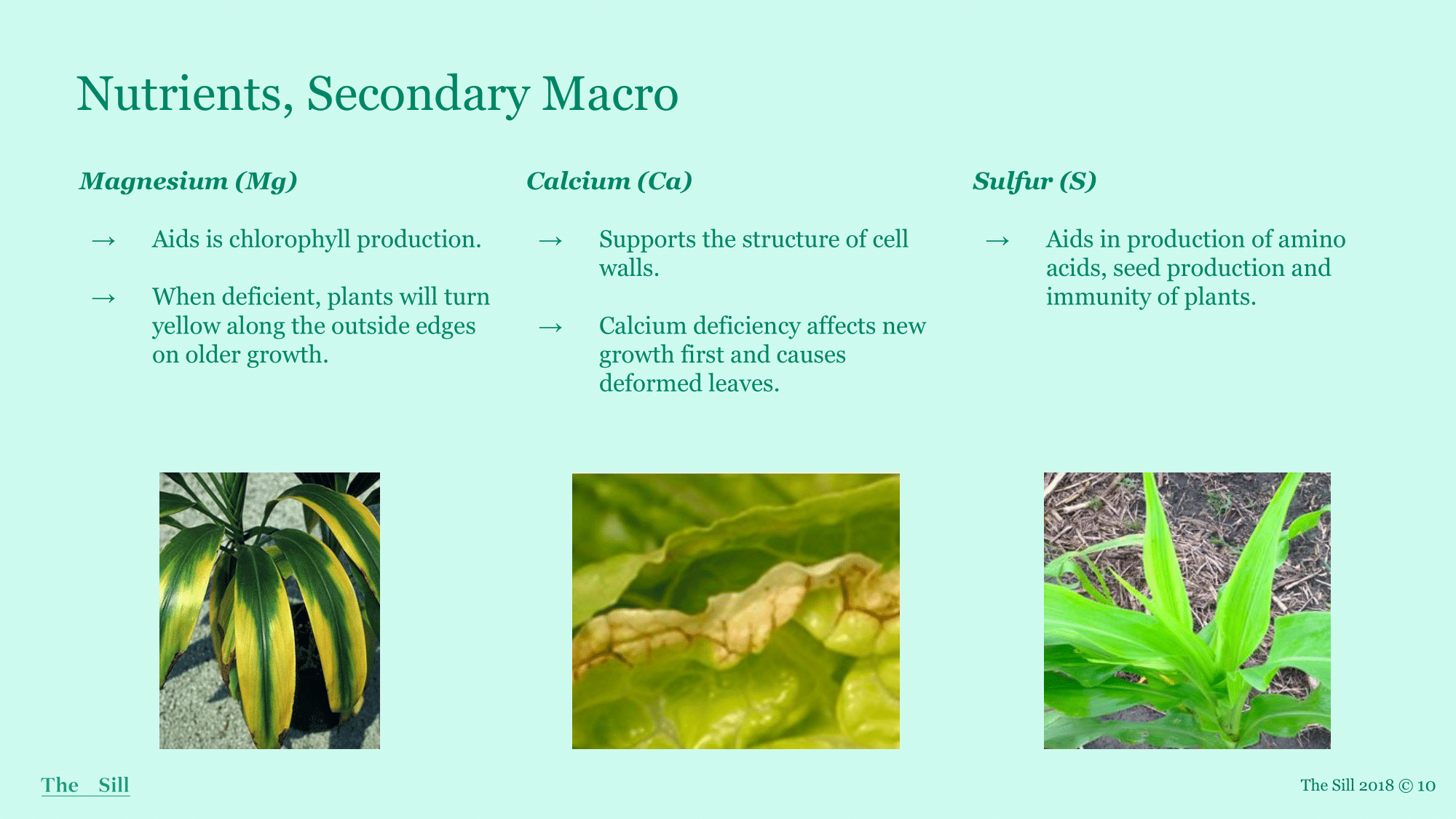Nutrients + Fertilizing
Part 2 of 5

Nutrients
- C, H & O - supplied by air and water through processes like photosynthesis, respiration & transpiration.
- Macro/micronutrients come from soil or fertilizers. 13 elements are divided into macro and micro nutrients, macronutrients are subdivided based on the degree to which plants use them (primary & secondary)
- NPK - designates the Primary macronutrients which plants need more of compared to the secondary macronutrients & micronutrients (Nitrogen, Phosphorus, Potassium). You can choose an all balanced fertilizer where the ratio for each is equal. Or you can choose one with a higher first # (Nitrogen) which stimulates more vegetative growth, while a higher second # (Phosphorus) can help to encourage fruiting & flowering for certain species (african violets, orchids, bromeliads, etc.)

Primary Macro
Photos are photos of deficiencies - and what they look like
- N - Responsible for strong, vigorous, green growth. Leafy plants like Palms & grassess need more. Helps make proteins & plant tissue.
- P - Good for root & bud growth. Deficiency also includes purpling on the older foliage.
- K - Good for overall health, strength & immunity. Makes plant weak.

Secondary Macro
Photos are photos of deficiencies - and what they look like.
- Mg - older leaves may also turn purple since Mg helps with Phosphorus transfer
- Ca - growth tips on both roots and shoots weaken & decay. Eventually the edges of plant roots and tips will die off.
- S - low probability of deficiency occurring. Sulfur deficiency will affect new growth first with chlorosis and make them more susceptible to bacterial infections.

Micro Nutrients
Micronutrients aren’t needed in higher degrees like the macronutrients, and it is very low probability to notice any deficiencies in this area. Therefore, it’s not crucial to understand micronutrient function and deficiency to be a successful plant parent, but they are listed here so you understand why micronutrients plants do use and how they use them.

What Is Fertilizer?
- Fertilizer is like a multivitamin for plants. In nature plants would get their necessary nutrients from the soil in their native environments, so we must try to recreate that in the home.
- Organic can include manure, bone meal, compost, worm castings, fish emulsion, etc. While organic fertilizer can help to improve soil structure and releases nutrients slowly, they are often unpredictable with the amount of nutrients it can provide & when, and can also be foul smelling.Synthetic: Synthesized & man made in a lab to be a more refined and concentrated form of nutrients, that also contains micronutrients. This is the kind of fertilizer most houseplant parents will use, and can be found in water-soluble form (liquid) or slow/fast release granular pellets, spikes, etc.
- Over-fertilization: Use fertilizer during the peak growth season in the spring and summer months and follow directions on the label.Plants that have recently been repotted don’t need fertilizer because fresh potting mix is rich in nutrients. Wait about 3-4 months from repotting to start fertilizing. The Sills potting mix can be fertilized 3-4 months after planting during the growing season, but if you’ve recently repotted during Fall/Winter then you can wait to fertilize in the Spring!If you are consistently using filtered or distilled water, fertilize more regularly to add vital minerals that usually tap water would provide.

Topics
